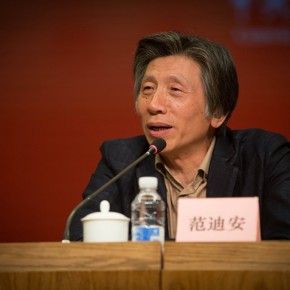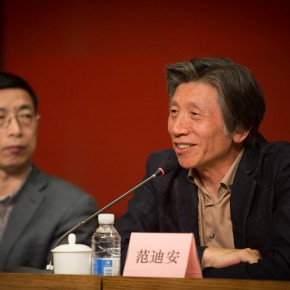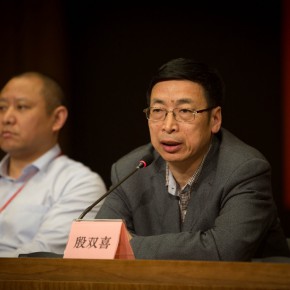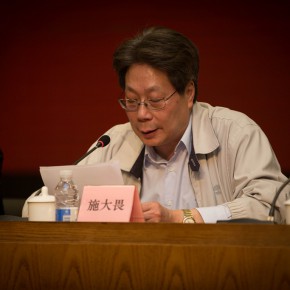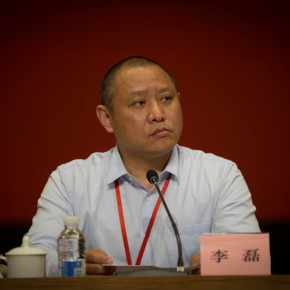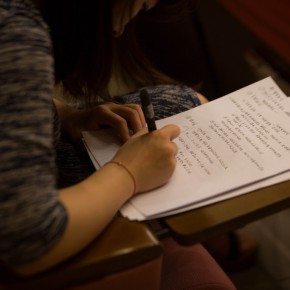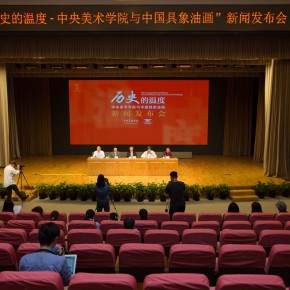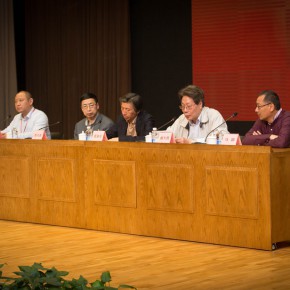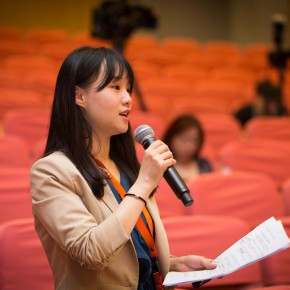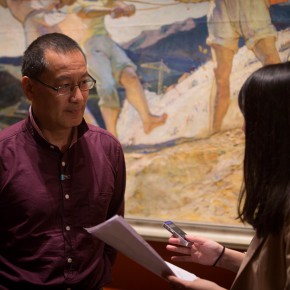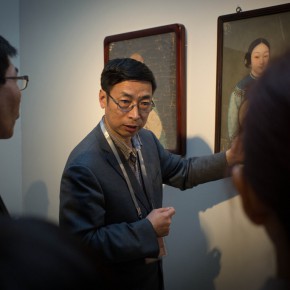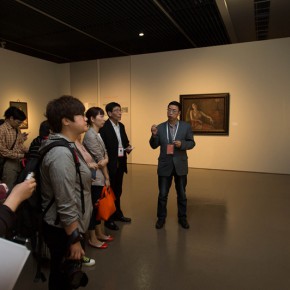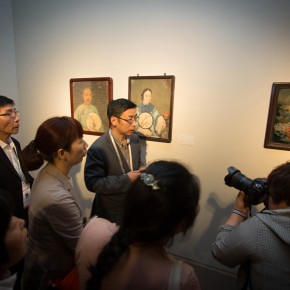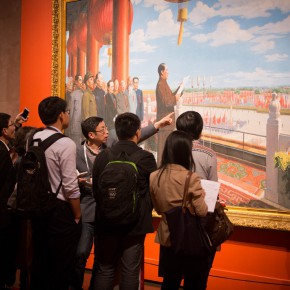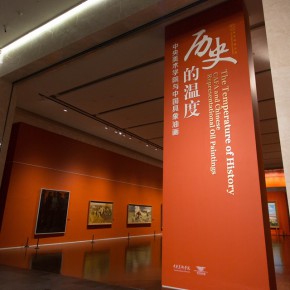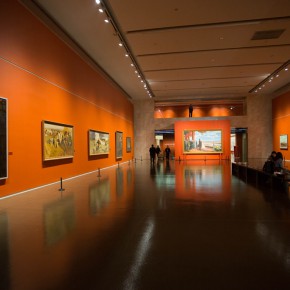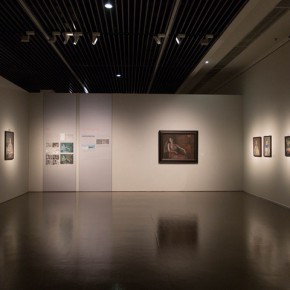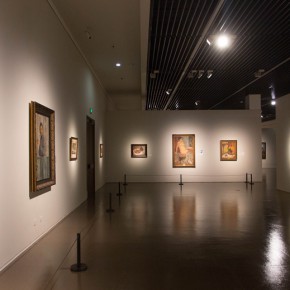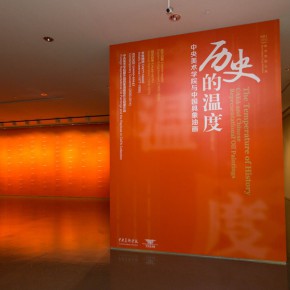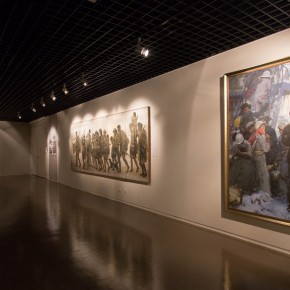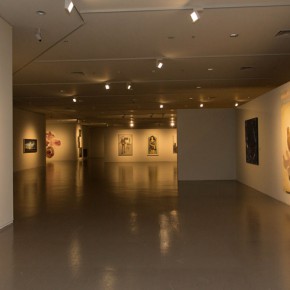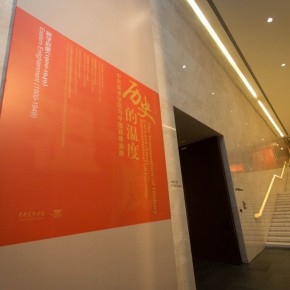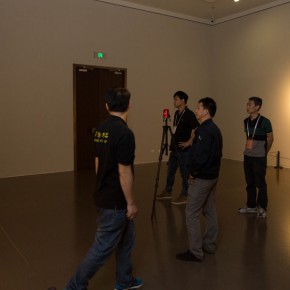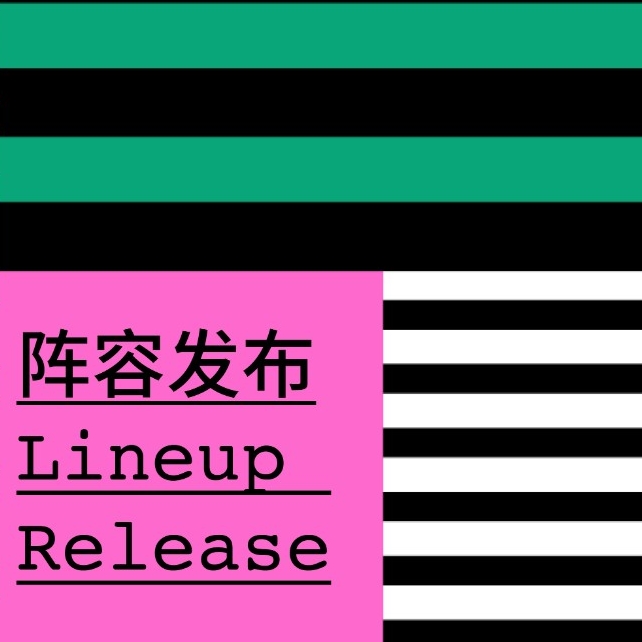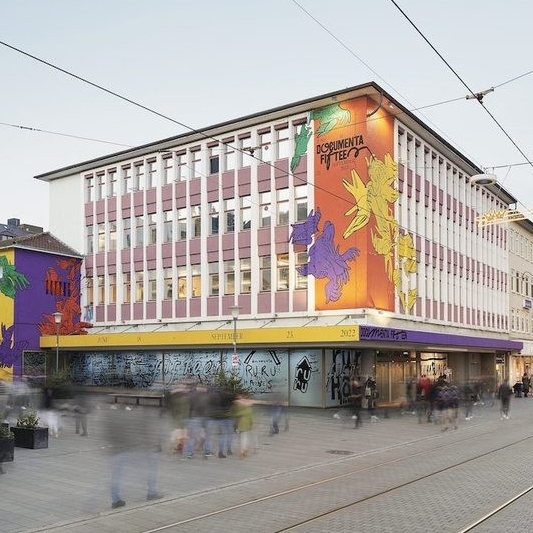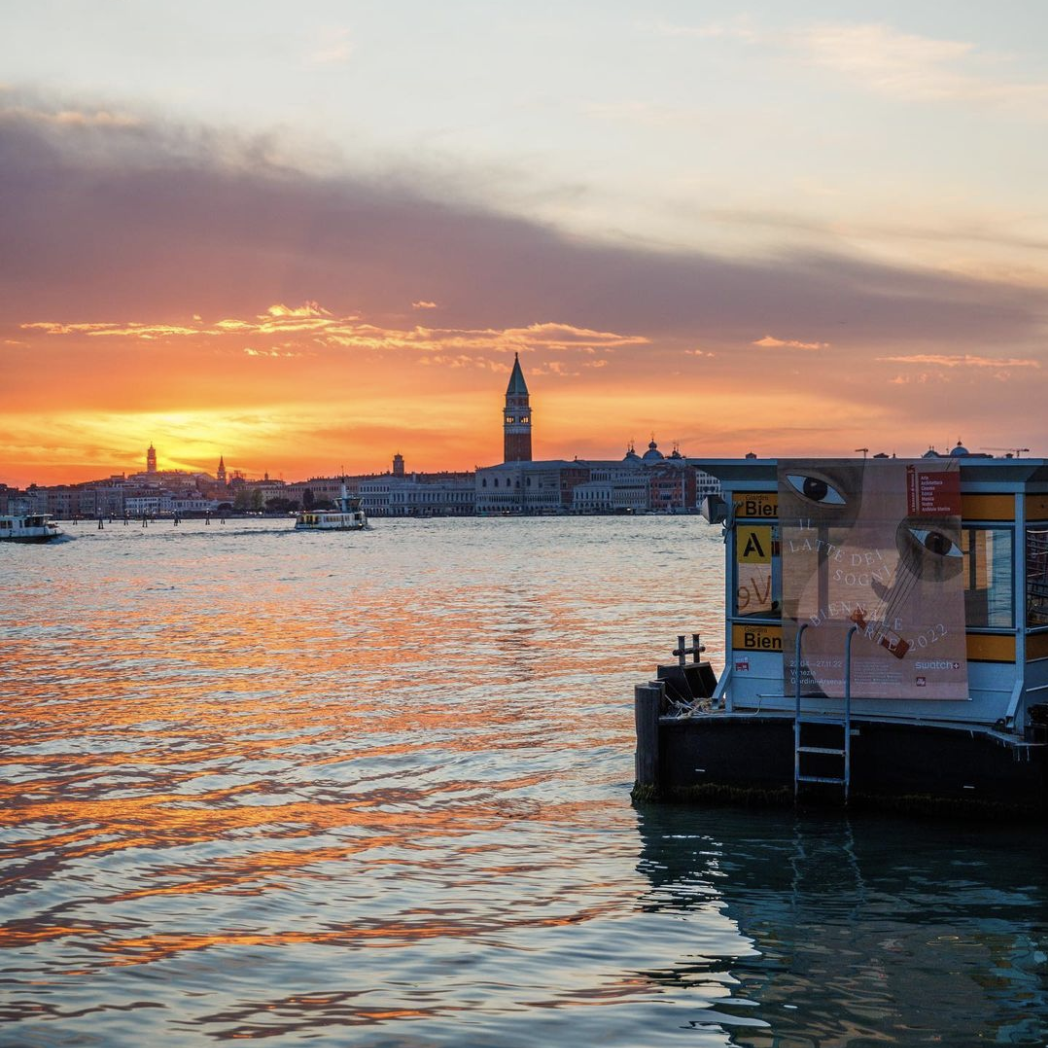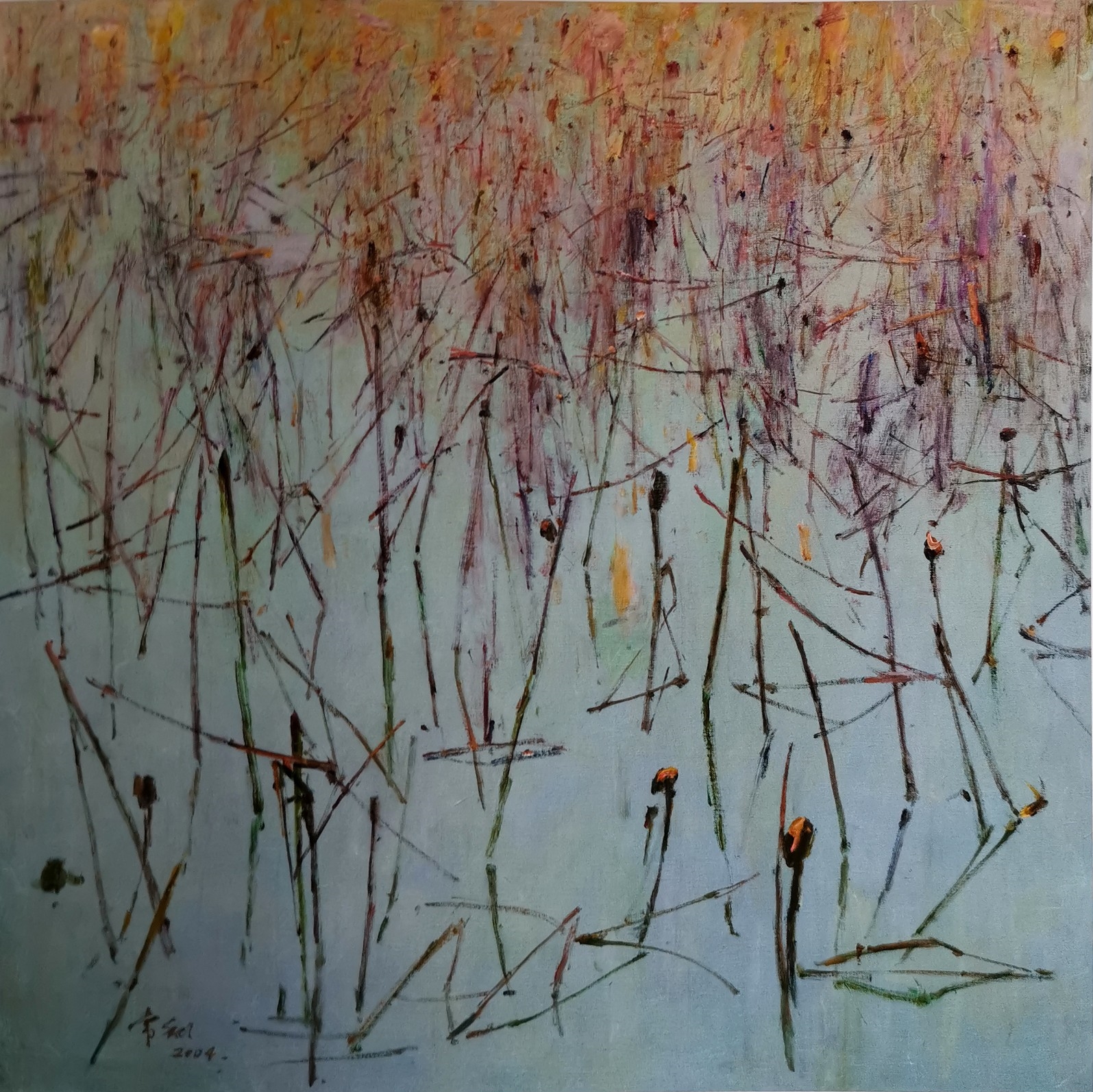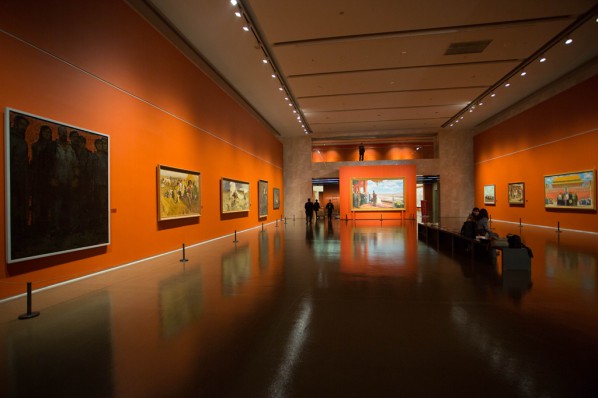
At 2:00 pm on April 28, 2015, hosted by CAFA and China Art Museum, the press conference of “The Temperature of History–CAFA and Chinese Representational Oil Paintings” was held at China Art Museum, Shanghai. Fan Di’an, President of CAFA, curator Yin Shuangxi, professor of CAFA, Professor Ma Lu, Dean of the School of Plastic Arts, CAFA, Shi Dawei, Director of China Art Museum and Li Lei, Deputy Director of China Art Museum attended the press conference.
At the press conference, first of all, Fan Di’an pointed out the problems of the mechanism of an art museum, and he said the exhibition was held at China Art Museum in order to keep the appeal of the art museum for the public, to put forward the exhibition idea which corresponded with the times, and has great significance in the promotion of public aesthetic accomplishments. In addition, Fan Di’an also talked about the relationship between the Chinese oil painting and Shanghai, the history of CAFA, history of the teaching of the Department of Oil Painting, CAFA. He said that the exhibition highlighted the relationship between academy education and the development of Chinese oil painting, which reflected that CAFA had made efforts to improve the development of Chinese oil painting and their value.
Curator Prof. Yin Shuangxi said that the promoting of the results of academic research to the public and communicating with the public had been important points of thought, from the perspective of academic researchers. In addition, for art museums, there should be further improvements in academic reserves and research investment to improve and complement the exhibition plan. This exhibition is a trial in combining academic research with public promotion.
Professor Ma Lu, Dean of the School of Plastic Arts, CAFA introduced the 4 sections of the exhibition from the perspective of an artist. He said that, no matter which period is discussed, one could see the artists focusing and exploring oil paintings through their work, which commonly improves the development and evolution of Chinese oil painting.
Shi Dawei, Director of China Art Museum said it was a key part of “Together: 2015 Gallery Group Exhibition”, China Art Museum and CAFA would officially open an in-depth cooperation in the form of an exhibition, hoping to gain more things in a larger field where they echoed each other.
After the press conference, the chief planner Fan Di’an was interviewed by a variety of media representatives including CAFA ART INFO, while curator Yin Shuangxi guided the media to visit the exhibition.
Introduction to the Exhibition
The majority of the exhibited works are from treasured representational oil paintings of the 20th century in the CAFA collection, as well as the collections from the National Art Museum of China, Xu Beihong Memorial Hall, China Art Museum and the artists’ collections, including a total of more than 300 works, placed in 5 exhibition halls, covering more than 2000 square meters.The exhibition is divided into 4 sections, including Eastern Enlightenment, National Narrative, Artistic Essence and Contemporary Concerns, not only drawing the outline of the creation of the CAFA painter groups through different historical periods from the perspective of history but also starting from the association of oil painting and the construction of Chinese new culture, to present the essence of value and cultural significance of oil painting.
The Exhibition Sections
I Eastern Enlightenment (1900-1949)
At the end of Qing Dynasty and during the early Republic of China, China opened and introduced Western culture, this contributed to the most far-reaching cultural change in Chinese modern history. In the history of Chinese art education of the 20th century, a large number of well-known art educators such as Li Tiefu, Zhou Xiang, Li Shutong, Zheng Jin, Li Yishi, Feng Zikai, Lin Fengmian, Xu Beihong, Liu Haisu, Yan Wenliang, Lin Wenzheng, started and established the system of Chinese modern arteducation. They pursued “democracy” and a “scientific” ideal of patriotic intellectuals from the May 4th Movement, introducing Western educational thoughts on art and methods into China, and the former president of Peking University put forward the idea of “substitute religion with aesthetic education”, which became the core of the Chinese art education in the 20th century.
II National Narrative (1949-1976)
In September, 1949, the Department of Fine Arts of the School of Literature and Arts, Northern China Union Revolutionary University from Yan’an Lu Xun Institute of Art and Literature, was combined with Beijing National Art School, to establish the China Central Academy of Fine Arts (CAFA) in January, 1950. CAFA actively improved the socialist realism art in the fine arts of new China, taking national major historical themes as the subject, to build historical narrative and collective memories of the new China. This national narrative does not only include the theme of revolutionary history but also contains the shaping of heroes’ images, the construction of socialist labor, the daily lives of ordinary people, etc., and oil paintings with a variety of forms of Chinese art which were endowed with the important mission to showcase the breath of a big country, and shape the national spirit.
III Artistic Essence (1977-1999)
Since China’s reform and opening up, Chinese art has moved out of the previous closed traditional system, to showcase the creative trends of Chinese art in a new period with a more open cultural vision, especially Chinese oil painting, which sprung up with a variety of outstanding works with innovative thoughts and languages of form, reflecting the development of the times.
IV Contemporary Concerns (2000-2014)
Chinese modem art has a uniqueness which is different from the development process of Western modern art, and this has unique multicultural value. In addition to its peculiar ideological characteristics focusing on the thematic quality and the thoughtful, it also has an independent development track in artistic language. The teachers of the Department of Oil Painting, CAFA are always centered on the creation associated with the major social transitions and events in Chinese modern history in the 20th century, not only focusing on the collective performances of the people in each major period of historical development but also focusing on the happiness and sorrows of their daily lives from a micro perspective.
About the exhibition
Hosts: CAFA, China Art Museum
Exhibition advisory: Fan Di’an, Shi Dawei
Director of exhibition: Tang Bin, Yang Qi
Curator: Yin Shuangxi
Assistant curators: Guo Hongmei, Li Yao, Li Ning, Ge Yi
Venue of the opening ceremony: Art Theater of China Art Museum, Shanghai
Duration: April 30 – August 2, 2015
Venue of the exhibition: gallery 20, 21 on the 0 floor, gallery 25, 26, 27 on the 5th floor
Text by Yu Ya, Photo by Yang Yanyuan/CAFA ART INFO
Translated by Chen Peihua and edited by Sue/CAFA ART INFO


